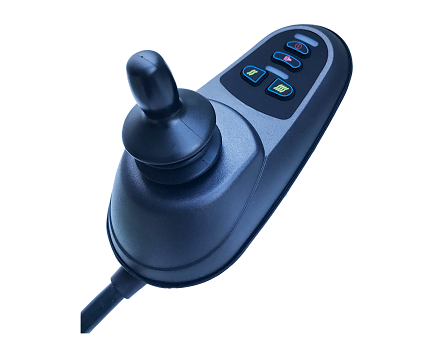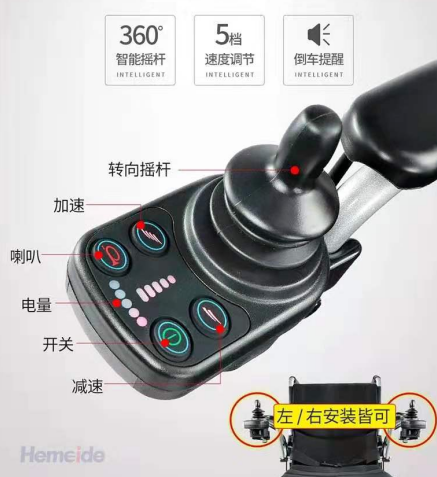The main control strategy of this design includes the following two aspects.
2.1 single circuit motor control strategy
Single circuit motor adopts PID closed-loop control to adjust the speed. The closed-loop performance of the system directly determines the dynamic and static performance of the servo system, which is the key part of the system control.
PID algorithm has the characteristics of simple structure and convenient debugging. Although the amount of change is certain in the regulation, but because the frequency of the closed-loop is very high, when the change variable is set to a small amount, it can also meet the performance requirements of the system. On the basis of setting Ki, KP and KD, by fine tuning the actual circuit parameters, the system can achieve better overshoot on the basis of basically satisfying the system rapidity, so as to improve the system stability.
2.2 control strategy of two-way motor
It is the control system block diagram of the electric wheel with two independent drives. Since the two motors are installed on the shafts of the two driving wheels respectively, when the internal parameters and external road conditions of the driving devices of the two wheels are different, even if the input of the two motors is the same, the speed of the two driving wheels cannot be guaranteed to be the same. Here, a compensation system is used to eliminate the speed difference between the two electric wheels generated during the operation of the system.
In the linear operation, the speed difference coordination system is used to adjust the speed of the two electric wheels. Set a driving wheel, let the speed of the driven wheel follow the driving wheel, and make the speed of the two electric wheels as consistent as possible. When turning, the motor on the inner and outer side decelerates at the same time, and the reduction of the inner motor is much larger than that of the outer motor. The two motors use their own reference speed to carry out independent PID calculation, so as to ensure that the wheelchair can turn when the road condition is not very good [2].
3 system hardware design
According to the functional requirements of the electric wheelchair, the design is mainly composed of a DSP and two BLDCM driving circuits, as well as the necessary level conversion circuit. DSP is responsible for the design and control of the whole system. All signal acquisition and processing are completed by DSP, and PWM signal and fault protection interrupt request are also generated. Combined with the actual situation, TMS320LF2407A is used as the control core in the design. It includes two independent event managers: each includes two 16 Bit Universal timers, eight 16 bit PWM output channels, three capture units, and the main frequency of DSP is 40MHz [3].
The driver circuit is mainly driven by the driver chip IR2130. The main body of the inverter consists of six power switch devices to form a three-phase full control bridge circuit. In order to prevent the voltage discharge at both ends of the bootstrap capacitor, the high frequency recovery diode her107 should be selected. On the other hand, in order to prevent the voltage at both ends of the bootstrap capacitor from being lower than the threshold value of undervoltage protection action due to the discharge of the bootstrap capacitor, the value of the capacitance should be large enough. In this design, 47 Z f capacitor is selected, with a withstand voltage of 25V [4].
4 system software design
The flow chart of interrupt subroutine for generating PWM wave of inverter driving signal. Figure 6 shows the flow chart of the two-way BLDCM speed coordination control interrupt subroutine. T2 and T4 are selected as the time base of the two BLDCMs, so as to accurately capture the time interval between two interrupts. The continuous increasing counting mode is selected for both clocks.


 Return
Return




